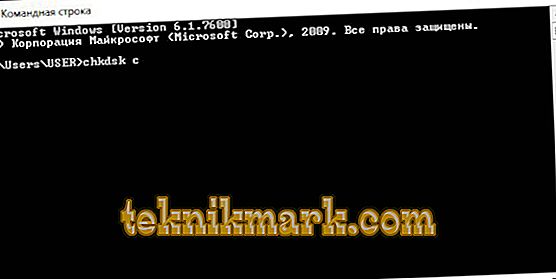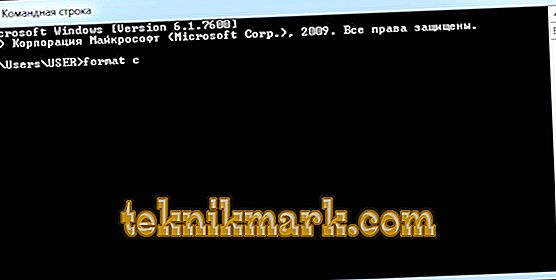The command line is a program that allows you to control the operating system using special text expressions, called commands. It is a versatile and advanced tool for diagnosing and fixing computer problems. Of all its functions, it is worth highlighting the opportunity to check for errors and format the disk via the command line in Windows.

The hard disk of the computer is the data storage of both the OS itself and the users. Windows’s known weakness is its inability to clean up “garbage” after itself: remnants of unused files and remote applications, registry problems and data logging. Therefore, periodically, except for all other measures, it is necessary to diagnose whether there are errors. Also in many cases formatting may be required:
- When installing a new hard drive.
- In the presence of a large number of failures, glitches in work, infection with viruses.
- When reinstalling the OS.
Formatting is a markup of a data storage area, the formation of a file system, i.e. the set of logical rules that access the recorded information. Moreover, the old information is erased, the damaged areas of the hard drive are marked, so that no data is recorded there. Before formatting a hard drive, it must be checked for errors.
Diagnosis with ChkDsk
On Windows, there is a special tool called disk check (ChkDsk) that runs from the command line. It is possible to use it through the explorer window, but not with all the parameters and another interface. The utility allows you to improve the work, fix problems and damage. Be sure to consult this tool before you decide to format your media. Perhaps this will solve the problems of poor performance. To run the program do the following:
- Run a command prompt as administrator.
- Type chkdsk with :, where c is the medium to be checked.

- Press enter.
- If the computer displays a message that the command cannot be executed due to the fact that the disk is being used by Windows, and offered to check before the next OS boot, type "y" (yes) and press enter.
- Reboot, and before the OS starts, a disk check will be started, after which a result report will appear on the screen. How many problems and bad sectors were found and how many were fixed.
Disk check can be performed with various parameters:
- / f— correct errors;
- / v— shows checked file and directory names;
- / r— searches and repairs damaged sectors;
- / I— checking indexes with less care, is used only for the NTFS file system;
- / x— forces the volume with the f option;
- / l: size — changes the log file to the specified size, works only with NTFS.
The parameter is written after the command, for example:
chkdsk with: / f / r

This means that the disk will be checked with, errors will be corrected automatically (/ f), sectors will also be checked for damage and an attempt will be made to recover the information (/ r).
If chekdisk found errors, but cannot correct them, run the following command:
chkdsk with: / f / offlinescanandfix
This will produce the so-called off-line diagnostics of the hard drive, you may also have to reboot.
Correct work of ChkDsk is possible only if the command line is running on behalf of the administrator, and also only with FAT32 and NTFS.
Formatting
Formatting is a more fundamental way to get a hard disk in order. All information on it will be lost, in most cases, it will be impossible to recover. It depends on the chosen method and on the presence of damage. There are special data recovery programs, but still it is better not to take risks and format the hard disk only after copying data from it to another medium.
You can perform formatting via the command line using the following algorithm:
- Open a command prompt as an administrator.

- Type format c, where c is the drive letter you want to format.
- When asked about your confidence in the action, press "y" and enter.
As with ChkDsk, you can set parameters here. Help for features can be obtained with the format /? Note the following most important:
- format with: / FS: filesystem— formatting in a specific file system, instead of “filesystem” you need to specify FAT32 or NTFS.
- / q - fast formatting. The table of contents is cleared, but the data itself is not destroyed. They continue to be physically there, but Windows sees the disk as completely empty and writes information over old data. If possible, it is recommended not to use this parameter in order to avoid further problems in the operation of the carrier.
- / a: size — format with the default cluster size.
- / v: label — create a volume label, that is, the name of the disk.
Formatting a hard disk will allow you to use it again as a new one, increase its speed and eliminate errors. Together with the ChkDsk and Format commands, you can also run such as DiskPart from the command line to split the media into sections with different sizes and names. Remember that if you bought and installed a new hard disk in the computer, then it must be formatted. And if you are just not satisfied with the work of the old hard drive, try to just start the test with ChkDsk first, especially if it is running an OS.


